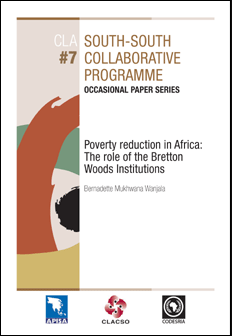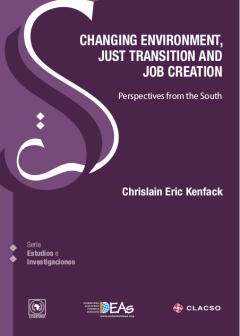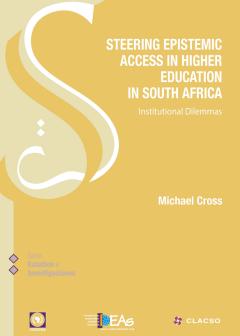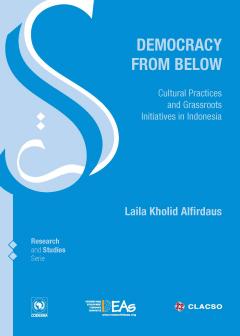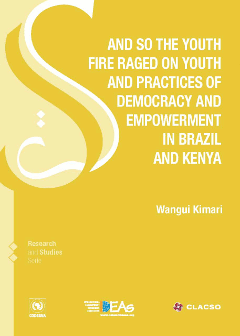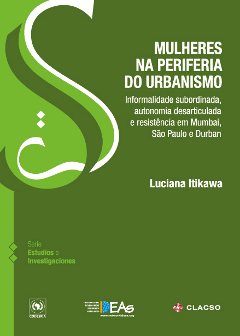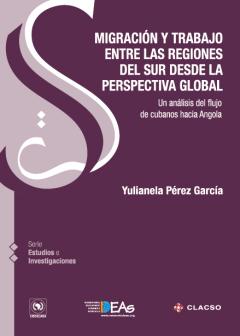- Sur-Sur.
Occasional Paper Series #7
Poverty reduction in Africa: The role of the Bretton Woods Institutions
Compartir:
“From development to poverty reduction” sums up the trajectory of the development discourse in Africa over nearly five decades since the advent of self-rule. Immediately after gaining independence from the colonialists in the sixties and early seventies, African economies showed remarkable economic performance, with an average GDP growth rate of about 5.7%. The trend was reversed from the mid-seventies, following several shocks such as the oil crises, droughts and civil wars. This saw the advent of Africa’s crisis, which greatly shaped the Africa of today, a continent considered to be the most vulnerable, poverty-stricken, debt-distressed, technically backward and marginalized. The eighties have been characterized as the “lost development decade” for Africa, as reflected by weak growth in the productive sectors, poor export performance, mounting debt, deteriorating social conditions, environmental degradation and the increasing decay of institutional capacity (World Bank, 1989, as quoted by Cheru, 1992). Africa is the only continent in the world that has grown poorer in the last 25 years, thus approximately 50% of its current population live in absolute poverty (people survive
on less than US$1 per day). There were about 580 million in Africa in 1995, out of which 291 million had average incomes of less than one dollar per day in 1998 (World Bank, 2001). The continent is the only region where the incidence of poverty could worsen by 2015 given that it requires a sustained per capita growth rate of at least 4.6% per annum to make significant progress towards achieving the Millennium Development Goals (AfDB, 2003). Africa also has a very low per capita income compared with other regions. Per capita income for the continent increased from an average of US$339.8 over 1970–1975 to US$709 over 2000–2003, compared with an increase from US$1,207.3 to US$5,309.3 for the world over the same period (UNCTAD online statistics). This marginal increase in per capita income falls short of redressing the substantial income losses and impoverishment of the lost decades. (...)
on less than US$1 per day). There were about 580 million in Africa in 1995, out of which 291 million had average incomes of less than one dollar per day in 1998 (World Bank, 2001). The continent is the only region where the incidence of poverty could worsen by 2015 given that it requires a sustained per capita growth rate of at least 4.6% per annum to make significant progress towards achieving the Millennium Development Goals (AfDB, 2003). Africa also has a very low per capita income compared with other regions. Per capita income for the continent increased from an average of US$339.8 over 1970–1975 to US$709 over 2000–2003, compared with an increase from US$1,207.3 to US$5,309.3 for the world over the same period (UNCTAD online statistics). This marginal increase in per capita income falls short of redressing the substantial income losses and impoverishment of the lost decades. (...)
Detalle
- ISBN:978-987-1183-88-3
- Editorial/es:CLACSO. CODESRIA. APISA.
- Ciudad de edición:Buenos Aires.
- Fecha de publicación:Enero de 2008

